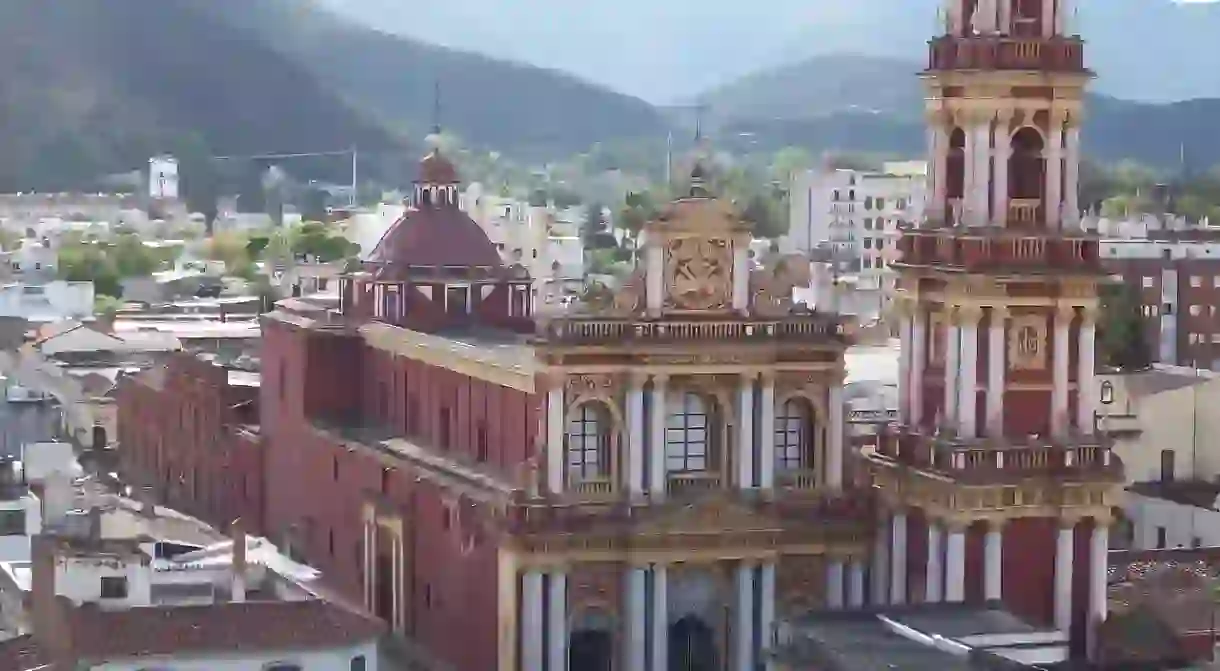A Walking Tour of Salta's Neo-Classical Architectural Landmarks

Salta is a popular tourist hub for the incredible quebradas of nearby Humahuaca to the north and the pristine wine growing region of Cafayate to the south. But there is a damn fine reason to savor the city itself – its eclectic mix of stunning Neo-classical architecture. So join us on a walking tour of Salta’s best architectural landmarks, beginning in its leafy central plaza.
Plaza 9 de Julio

As the traditional center of town, the palm tree-lined Plaza 9 de Julio is surrounded by numerous important historical buildings and is a pleasant space for locals to meet and relax. The square pays homage to General Juan Antonio Alvarez, a revolutionary and beloved governor of the city whose remains are kept in the nearby Catedral de Salta.
Catedral de Salta
Cathedral, Church

On the northern end of the plaza is the unmissable bright pink Salta Cathedral, the city’s most important church. The current construction was finished in 1882, replacing a former church which was lost to an earthquake. Built in a neo-colonial style, the church features a rectangular floor, three naves and a high dome ceiling. Its grand entrance is in the baroque style while a series of stain glass windows allow ample light to flood in.
Museo de Arte Contemporáneo
Museum

A block clockwise from the cathedral is Salta’s Museum of Contemporary Art. This stunning three-storey Italian style construction was built in the 19th century to house a wealthy local family. The bottom floor was originally used for commerce, the middle for the family and the top for their servants. It has been operating as an art museum since 2004, showcasing a rotating range of fine contemporary works.
Cabildo
Building, Cathedral, Museum

On the opposite end of the plaza to the cathedral is a building known simply as Cabildo. This elegant neo-colonial complex was constructed in the 18th century to serve as the city’s town hall, before being sold in a private auction some 200 years later. Thankfully, the historical landmark and architectural jewel was reacquired by the government in 1937 and has since been converted into the Museum of Northern History. Featuring an array of interesting artifacts from pre-Inca times up until the War of Independence, it’s a must for any history buffs visiting the city.
Museum of High Altitude Archaeology
Building, Museum

On the western side of the plaza lies another grand edifice, the Museum of High Altitude Archaeology. The building was constructed in the mid-19th century in the neo-Gothic style, with recent restorations to its facade successfully conserving the original style. Inside, it has been remodeled as a museum, although an original double spiral staircase inspired by Leonardo de Vinci’s design in the French Chambord Castle still remains. The museum was founded in 2004 following the 1999 discovery of the Llullaillaco Children –three immaculately preserved Inca mummies who were buried in a volcano some 500 years ago as a sacrifice to the gods. Their remains are on display in the museum.
Iglesia San Francisco
Church

Moving away from the plaza now, heading eastwards to admire the imposing San Francisco Church. This landmark church is often featured in postcards and is particularly striking for its contrasting red, white and gold color scheme. Though what impresses visitors most is the 173 foot (53m) bell tower, the tallest in South America and a historical site in the War of Independence. A small religious art museum is attached.
Convento de San Bernardo
Church, Historical Landmark

Unless you happen to be a nun, you won’t be allowed to enter this beautiful 16th century Neo-classical monument. Nevertheless, it’s worth walking the extra three blocks to admire its exterior and perhaps pick up a fresh pastry made by one of the nuns inside. A church adjacent to the convent can be visited during weekend services.













